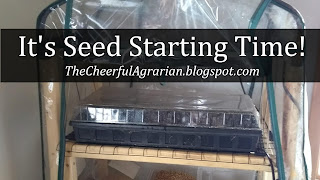What is a pudgie pie, you ask? It's also sometimes called a Hobo Pie, and it's basically a sandwich toasted over a campfire using a special iron (click here or see the link below). I recommend using the cast iron version rather than the aluminum kind (I don't use aluminum for food preparation in general, and I also feel that the cast iron heats more evenly).
To make a pudgie pie, you butter two pieces of bread and place them into the iron - butter side out, touching the cooker. Then you fill the sandwich with your filling of choice - either sweet or savory - close the cooker, and set it into your campfire to cook (a nice hot bed of coals works best). It's done when you say it's done - a light golden brown or almost black, everyone has their own personal preference, just like roasting a marshmallow or making toast. As long as your ingredients are pre-cooked, it doesn't really matter.
Our favorite savory pudgie pies are hot ham and cheese. Think paninis - it's basically the same idea. My husband likes to make his with turkey, cheese, avocado slices, and crushed garlic (he really likes his garlic!) Another favorite is Pizza Pudgies - pizza sauce and mozzarella, with your choice of fillings: pepperoni, mushroom, black olive, green pepper, etc.
But of course the best pudgie pies are the dessert pies. Growing up, we always had pudgies with canned pie filling (cherry is my favorite!) It wasn't until I was married that I tried other options, like PBJ (if you haven't had melted peanut butter and jelly, you haven't lived!), peanut butter and chocolate (think a melted peanut butter cup), or my all-time personal favorite: dark chocolate covered cherry.
The possibilities are endless, and kids love the chance to make their own special sandwich, just for them. When cooking with kids, however, be careful; the irons get very hot! It's helpful to have a heat-proof table nearby to set your irons on when filling and emptying them (plastic folding tables are NOT good for this - mine now has a permanent pudgie pie iron mark melted into the top!)
To serve your pie, simply pull the handles apart so that the pie is on one side and the other is empty, then flip it out onto a plate. If you added enough butter at the beginning, it should fall out easily. This part can be tricky for kids with shorter arms, so it's best for adults to work with the hot irons after they've been taken out of the fire.
So as you can see, pudgie pies can be a super simple, family-friendly meal, or just a special treat around the campfire. They've always been a camping tradition in our family, and I have a feeling it's one my kids will be passing on to their children someday, too.
How about you? What are your favorite pudgie pie "recipes"?
Please note - the links above are affiliate links. If you make a purchase after clicking I will receive a small commission, but your price remains the same. Thank you for your support!








